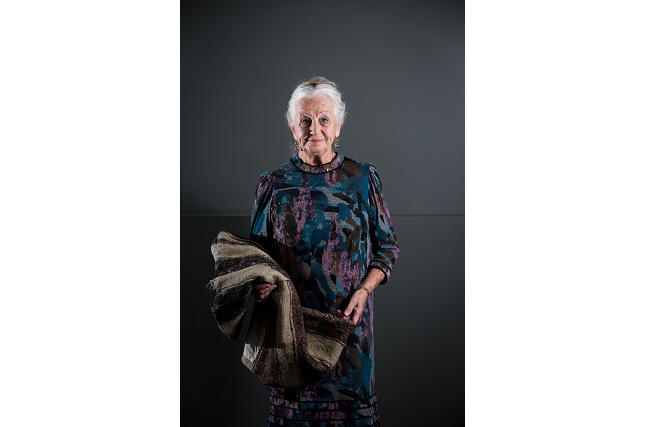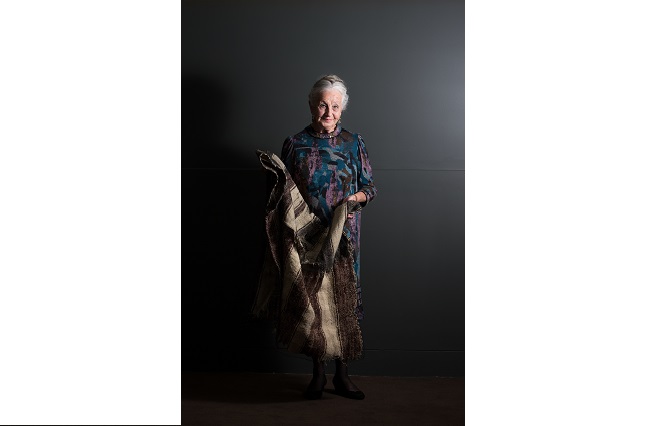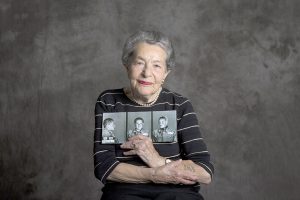Olga Horak is one of the few remaining Holocaust survivors in Sydney, and at 89 is one of the long-standing volunteer guides at Sydney Jewish Museum, the Darlinghurst institution she helped found.
In 1944, Horak was 16 when she was transported to Auschwitz from her home in Slovakia, where she survived five camps.
For Horak, sharing her experience was far from first nature. “As a newly-wed and a recent immigrant to Sydney in 1949, I was busy establishing our garment business with [my late husband] John. I never spoke of my experience. Not even to my children until they were older.”
The first time Horak was asked to share her testimony as a Holocaust survivor, she declined. Professor Colin Tatz, an expert in genocide and Holocaust invited Horak to speak at a private seminar. It took several attempts before Horak accepted the invitation. It was not a topic she could comfortably share with others, let alone with complete strangers. Her own children learnt her story only in response to questions about why they did not have grandparents.
Prompted by Professor Tatz, Horak embarked on a journey of speaking tours around Australia and has been an advocate of the cause ever since. Horak is a member of Association of Jewish Holocaust Survivors, a lobby group for the Sydney Jewish Museum, and says of its foundation; “This [museum] building used to be a community hall with offices. It wasn’t being utilised for much back then. So we went to John Saunders who is the founder of Westfield and a holocaust survivor himself, and proposed the idea of starting a museum.”
With John Saunders’ generous $6 million contribution, the Sydney Jewish Museum opened its doors in 1992, with the purpose of documenting and teaching the history of the Holocaust. Five years later, Saunders transferred the museum to the Jewish community on one condition – that the survivors tell their stories.
I never spoke of my experience. Not even to my children until they were older.
The museum has an extensive collection of artefacts, newspaper clippings, pictures, letters, first-hand accounts and video presentations. All the documents and the artefacts on display are original, many of them donated from the Jewish community or brought to the museum from German archives. “It’s not the biggest in the world, but it is one of the best in the world” Horak says.
Horak has donated a blanket woven from human hair made for the Nazis by the inmates of Auschwitz. Horak found the blanket after it had been discarded by a Kapo (guard). “When I was liberated from Bergen Belsen camp in Germany on April 15, 1945, I was 18 and weighed 29kg. I was on the ground, half naked and frozen; I used that blanket to cover myself.” The blanket is displayed in the museum, the only one of its kind that particular colour and pattern in Australia, and possibly in the world.
After 70 years since her liberation, Horak clearly remembers the details of her past. Regardless of how many times her story is told, it is always painful. Standing next to the photographs of her parents displayed in the museum, Horak recalls the most difficult part of her memory.
“I was transported to Auschwitz from Slovakia in 1944 and I never saw my sister and father again, they were gassed on arrival in Auschwitz. My mother and I survived the labour camp and death march together. But on the day of liberation, as soon as we received our registration cards declaring us as Survivors and “displaced persons”, my mother took her last breath and collapsed.”
Despite this, Horak is determined to keep her memories alive. “To forget my past is an insult to all martyrs and my family. I owe it to my family to tell my story so that the future generations will not forget it. “In coming years, Survivors will be gone. But our stories must live on this ugly part of history must not be forgotten.”
To honour her contribution to the community, Horak was awarded the Order of Australia in 2014. To learn more about Olga Horak and the Holocaust, visit Sydney Jewish Museum: http://sydneyjewishmuseum.com.au/
Meet Hanna Kim Hong, one of our roving reporters. Mother of a young family and legal advocate with the Arts Law Centre, Hanna still gets time to check out what’s on in galleries and museums about town. Read what she’s got to say.






